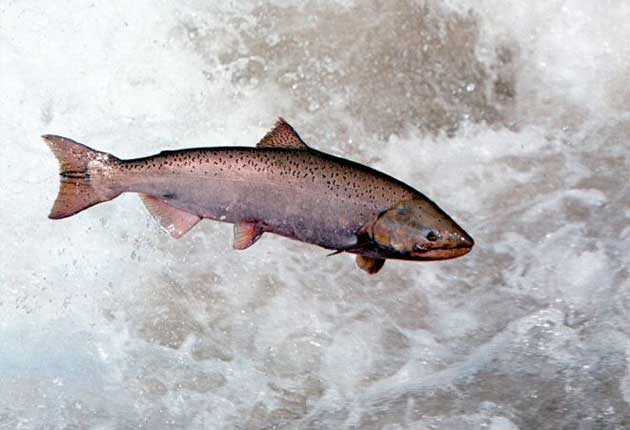Secrets of migrating salmon unlocked by 'scale model'

The life history of a salmon is contained in its scales, scientists have discovered, just as the age of trees is betrayed by their rings.
The finding is allowing researchers to unravel the centuries-old mystery of where Atlantic salmon disappear to when they leave the rivers they were born in and swim out to sea. By analysing chemical signatures trapped in the scales of fish caught in rivers, scientists can work out which part of the sea each one has been feeding in as it matures, before heading back inland to spawn. Such analysis could help conservationists protect dwindling stocks.
The research, funded by the Department for Environment, Food and Rural Affairs, showed that Salmon from Dorset fed as adults mainly off Iceland and the Faroe Islands, while those from the Tyne headed off to Norway.
Differences were also found between age groups, with older and younger fish preferring different feeding grounds. Researchers have been able to pinpoint these areas because as the fish mature their scales absorb carbon isotopes whose proportions vary according to which part of the sea the fish are feeding in.
Dr Kirsteen MacKenzie, of the University of Southampton's National Oceanography Centre and lead author of the research, which was published in the journal Scientific Reports, said: "As every salmon contains a natural chemical tag, we can now see where fish from individual rivers go to feed in the Atlantic." She said the technique should be equally valid for determining where other fish and marine animals, such as turtles and seabirds, have been feeding.
Since the 1950s about four million salmon have been tagged in an attempt to trace them but only 3,000 tags have ever been recovered.
Join our commenting forum
Join thought-provoking conversations, follow other Independent readers and see their replies
Comments